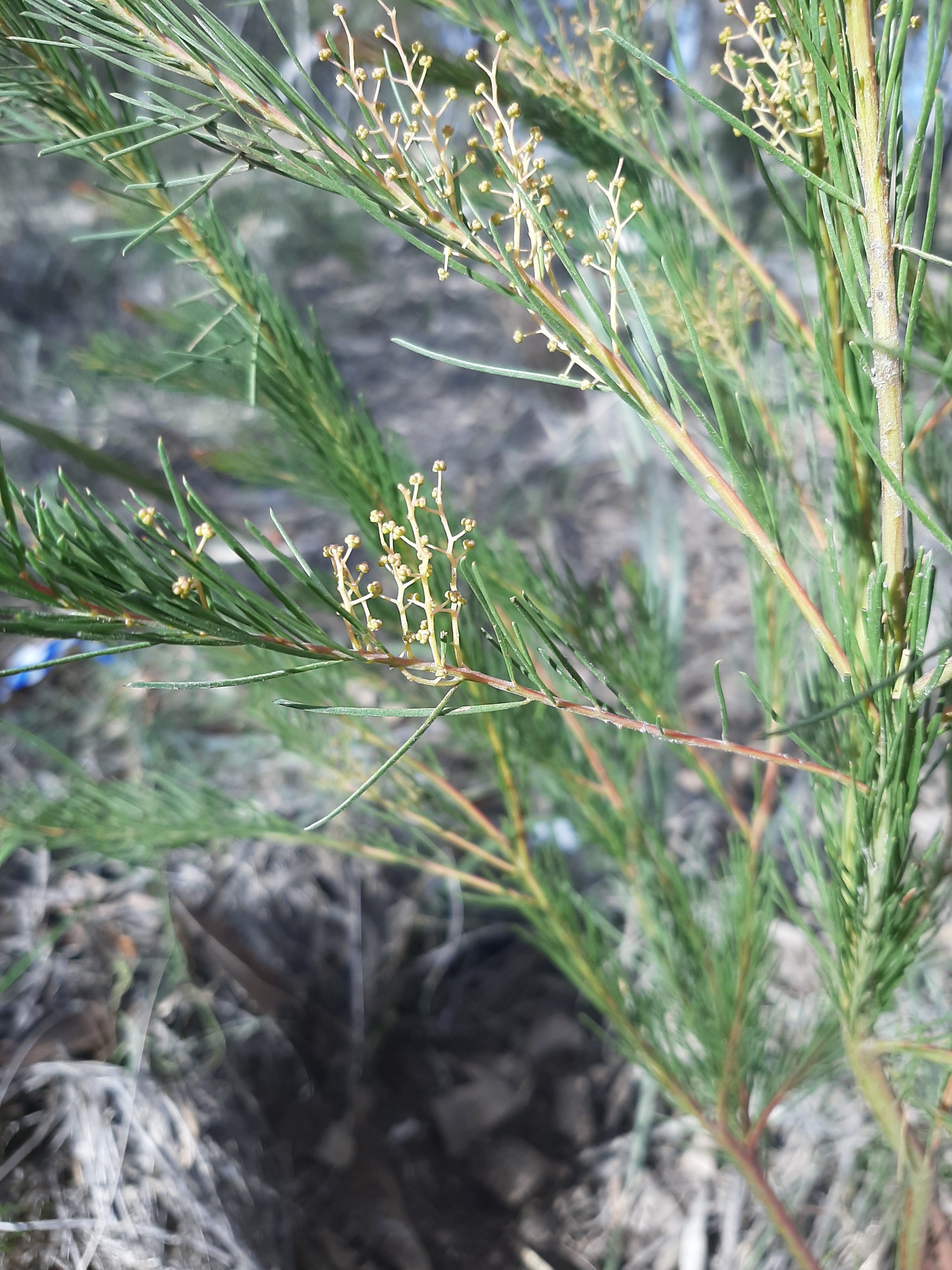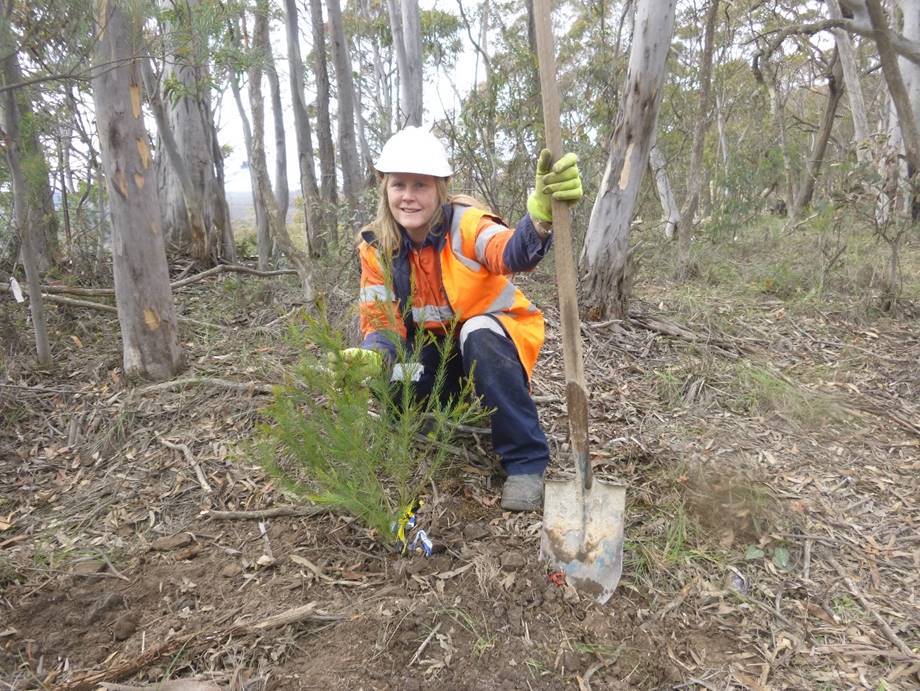The endangered Acacia meiantha rescue
Friday, 18 December, 2020
The opportunity to translocate an endangered species which is at threat of being destroyed to a safe location, is any Ecologist’s dream. Especially when this also gives them the chance to increase knowledge of the species.
Crudine Ridge Wind Farm is owned by CWP Renewables and Partners Group, currently under construction by GE Renewable Energy and Zenviron with support from A1 construction. The project will provide power to around 55,000 homes. We are currently working on this large-scale renewable energy project near Mudgee NSW, providing advice to minimise and avoid impacts to native vegetation with the micro siting of turbines.
Between 750 to 1000 endangered Acacia meiantha plants were identified along the roadside on Aarons Pass Road which required widening to allow turbines and blades to be moved on site. 59 individuals were within the designated impact zone. Our Ecology team were engaged to monitor and manage the translocation of the species.
Acacia meiantha is a native wattle that also grows in Clarence (near Lithgow) and Mullion Range (near Orange). The plant flowers yellow in July through to October and can grow up to 2 metres tall. This species is listed as endangered under both NSW and Commonwealth legislation and is also part of the ‘Saving our Species’ Program, a state-wide program designed to secure threatened plants and animals in the wild.

Acacia meiantha plant at the site
So, it was our time to translocate this precious plant, but what exactly does ‘translocation’ mean? Translocation is the deliberate movement of flora and fauna from one location to another. We chatted with our Senior Ecologist, Dr. Cheryl O’Dwyer who led the project, “This was an opportunity to do really good conservation work. We had nothing to lose and everything to gain.”
In mid 2019, we consulted with regulatory authorities from the Biodiversity Conservation Division to remove the plants. When digging up the 59 plants, our team discovered that many of the individuals were in fact suckers and there were only actually 47 plants that required translocation.
It was time to move the plants. We began by pruning the plants to reduce the photosynthetic capacity, ensuring the plants weren’t wasting energy or releasing too much water during the translocation. When extracting from the ground we ensured as much root material was retained as possible. “The plants are very hardy as they are used to tolerating disturbance.” Cheryl commented.
Digging up Acacia meiantha plants in mid 2019
Our team also extracted 79 cuttings from the plants, “We were unsure whether we could grow the plants from cuttings, so this was a good time to test the theory.”
The plants and cuttings were potted, labelled and we carefully transported them to a glasshouse nursery to be monitored and maintained for roughly 10 months by The Watershed Landcare Group in Mudgee. “Unfortunately, no cuttings survived due to drought season. We believe there is potential for a successful cutting program during Spring when the plants are in a healthy condition to give us the best chance of success.” says Cheryl. “We will also see whether we can collect seeds from the field to do a germination trial.”
In late 2020, the 13 surviving plants were taken from the nursery and replanted back in the field, near where they were found with the same soil type and vegetation. The results indicated a 16% success rate. Whilst this may not sound like a lot, this is a promising result as the plants had struggled with long term drought and were not in prime health to begin with. “There has been a lot of learnings during the process; a great experience to further develop our capabilities in translocating a threatened species and getting the best possible outcome,” says Cheryl.
Our team have since been monitoring the plants on a weekly basis and all plants are looking healthy with abundant new growth. “Seeing the plants back in the field with buds and flowers starting to emerge has been so satisfying. It was great to see them so healthy – we’ve had a lot of rainfall in Mudgee, so watering hasn’t been necessary.” The plants are continuing to be monitored monthly until the end of the year.

Dr. Cheryl O’Dwyer replanting the Acacia meiantha plant in mid 2020
New buds appearing on replanted Acacia meiantha plants
Our team was made up of four Ecologists from ELA and two representatives from Landcare, “A good team with a broad range of experience and skillsets was crucial to the success of the project.” The results and learnings have since been shared with the team from the ‘Saving our Species’ program and this information will help further their research on the species.
“Translocation gives us the ability to gain an understanding of how threatened species can be moved. It’s great that if we need to translocate a species, we have the knowledge base and the required skillset to get positive outcomes.”
Get in touch for approachable expertise on all things ecology:
Dr. Cheryl O’Dwyer
Senior Ecologist
0410 552 708
Cheryl.ODwyer@ecoaus.com.au
www.ecoaus.com.au
